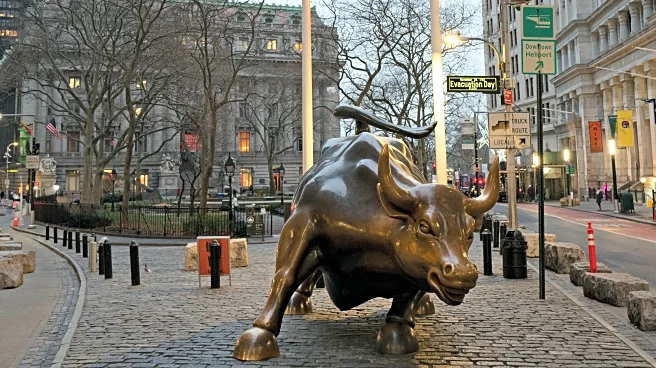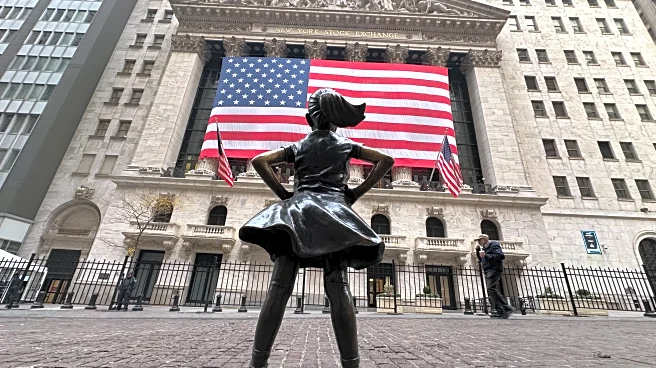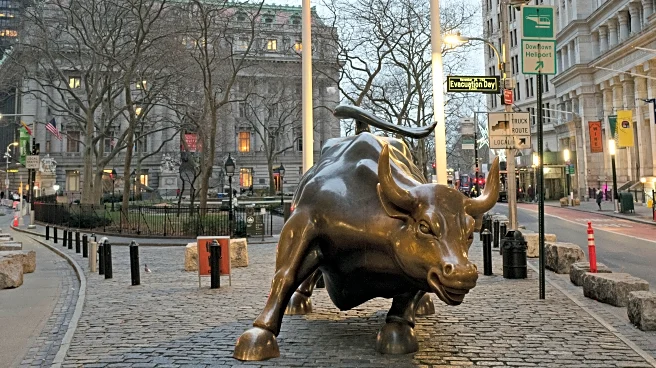What's Happening?
On Friday, Wall Street experienced volatility as investors grappled with new data indicating a slowdown in the U.S. job market. The S&P 500 fell by 0.3%, the Dow Jones Industrial Average dropped 220 points, and the Nasdaq composite edged down slightly. This market reaction followed a report from the Labor Department revealing that U.S. employers hired fewer workers in August than anticipated, with previous estimates for June and July overstated by 21,000 jobs. The bond market saw a decisive move with Treasury yields tumbling, reflecting expectations that the Federal Reserve might cut interest rates at its upcoming meeting. The Fed has been cautious about rate cuts due to inflation concerns exacerbated by President Trump's tariffs, but the recent job data could prompt a reconsideration.
Why It's Important?
The fluctuations in the stock and bond markets underscore the delicate balance the U.S. economy faces. Investors are hopeful for interest rate cuts to stimulate economic growth, yet wary of a potential downturn if the job market weakens further. The Federal Reserve's decision on interest rates is crucial, as it could influence inflation and economic stability. Companies like Nvidia and Lululemon are feeling the impact, with Nvidia's stock dropping due to concerns over its valuation amidst the AI boom, and Lululemon facing challenges from higher tariff rates. The broader market's response highlights the interconnectedness of economic indicators, corporate performance, and investor sentiment.
What's Next?
The Federal Reserve's meeting on September 17 is anticipated to be a pivotal moment, with traders betting on a rate cut. The extent of the cut will depend on ongoing economic data and inflation trends. Companies and investors will closely monitor these developments, as interest rate changes can affect borrowing costs, consumer spending, and corporate investment. The job market's performance in the coming months will be critical in shaping economic policy and market expectations.












